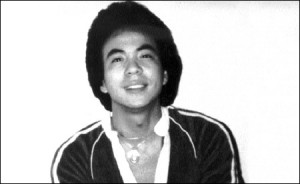When a local Georgian Township man, Trevor Middleton, was convicted of assault and criminal negligence in December, 2009, friends and family of the victims were hopeful that justice was served.
During the case, the jury had heard how Middleton and his friends had engaged in the practice of “nip-tipping†– that is, they would push into the water individuals who were fishing and who were of visibly Asian descent. This would be on the pretense that such people were fishing illegally, without licenses, or catching more fish than they were allowed to.
As well, the jury had heard how, after this altercation, Middleton had pursued the victims in his F-150 pick-up, how he had rammed their Civic with his truck, and how the victims were forced off the road and into a tree. The jury also had heard how one of the occupants, Shayne Berwick, suffered severe brain injury and is now confined to a wheelchair.
As a result, the jury had taken all of three hours to find Middleton guilty.
Then for sentencing, the Crown had sought a term of eight to 10 years. They argued that Middleton’s act was motivated by hate, and that, taking this into consideration, his sentence should be substantial.
Sec. 718.2(a) of the Criminal Code, the hate crimes sentencing enhancement, provides that:
A court that imposes a sentence shall also take into consideration the following principles:
In his ruling this February, Superior Court Justice Alfred Stong found that the Crown had proved racial bias and prejudice. “The terms ‘nip’ and ‘nip-tipping’ are derogatory terms directed at the Asian community.â€
Nevertheless, Justice Stong sentenced Middleton to a jail term of only two years less a day, as well as three years probation. The sentence also a 10 year driving ban, 240 hours of community service, and attendance in a cultural awareness course.
Reaction to the sentence was sharp. One of the victims, Ruohang Liu, tossed a courthouse chair in anger and frustration. Berwick’s father expressed frustration with effectiveness of hate-crime legislation.
[It] has proved to be toothless, he said, adding, “That didn’t do any good, did it?”
Their sentiments are reminiscent of a time before hate crime were legally recognized. Historically, one of the most poignant examples of this is illustrated in the sentiment of the friends and family of the victim in an unfortunate 1980s Michigan case: the death of Vincent Chin.
The Vincent Chin Case
On June 19th, 1982, Vincent Chin was attending his bachelor party with a group of friends. At a Detroit strip club, his group became involved in an altercation with another group: led by two men, Ronald Ebens and his stepson Michael Nitz.
Ebens and Nitz were found to have been motivated at least in part due to the fact that Chin was Asian American. Both had been laid off from their work in the auto industry, and the two expressed the sentiment that it had been due to competition from Asian companies.
“It’s because of you little motherf____rs that we’re out of work,” Ebens had said to Chin.
After both groups were ejected from the club, Ebens and Nitz grabbed a tire-iron and a baseball bat, and then trolled the area to look for Chin. When they found him at a nearby McDonalds, Nitz restrained him, while Ebens bludgeoned him repeatedly.
Although Ebens was eventually restrained by off-duty police officers moonlighting as security guards, Chin had already received sufficient injuries to lapse into a severe coma by the time he was rushed to hospital. On June 23rd, 1982, Chin was removed from a ventilator and pronounced dead – just four days before he was to have been married.
Ebens was initially charged with second degree murder, but was pled down to manslaughter. The sentence from the Wayne County Circuit Judge Charles Kaufman was no jail time, three years probation, a fine, and court costs.
When pressed about the sentence, Judge Kaufman stated:
“These weren’t the kind of men you send to jail… You don’t make the punishment fit the crime; you make the punishment fit the criminal.â€
Like the family of the victims in our Ontario case, the outcome for Ebens made Chin’s family question the efficacy of the justice system. Chin’s mother reportedly stated: “What kind of law is this? What kind of justice? This happened because my son is Chinese. If two Chinese killed a white person, they must go to jail, maybe for their whole lives… Something is wrong with this country.â€
A series of appeals eventually ended with an acquittal for Ebens. And while Ebens was later ordered to pay $1.5 million in a wrongful death suit for Chin’s death, his estate received few payments. The spectacle also became a flashpoint for organization and activism within the Asian-American community.
In Chin’s time, hate crimes were not recognized in the law. Over 20 years later, hate crimes are largely recognized, and indeed one of the highlights of the Middleton case is recognition that, yes, these offences were motivated by hate. But at least for the victims and their families, there seems to remain the sour taste of justice not quite served.
Tough on “hate”?
So the question stands, is the hate crime sentencing enhancement effective? Does it meet the purposes of sentencing: denunciation, deterrence, separation from society, rehabilitation, and acknowledgement of the harm done to society?
In sentencing Middleton to a driving ban, community service, and a cultural awareness course on top of jail and probation, Justice Stong has perhaps emphasized the goal of rehabilitation. The imprisonment enhancement of 8-10 years sought by the Crown perhaps placed more emphasis on denunciation.
But, would not the conventional view in Canada side with Crown’s position? Contemporary Canadian society can be said to have little tolerance for crimes motivated by hate. For example, last summer when three men were charged for attacking and yelling racial slurs at 38 year old Jay Phillips in the sleepy B.C. town of Courtenay, over 1,000 residents turned out for a rally to speak out against hate and violence. Surely, then Middleton’s sentence should likewise express our society’s condemnation of such offences, as clearly reflected by the hate crimes sentencing enhancement provision – especially where serious, permanent bodily injury is the result.
That said, I am not unsympathetic to the emphasis on rehabilitation. Obviously, the root cause of offenses such as these is based in ignorance. I previously noted that Georgian Township has substantially less visible minorities than the province at large. But I am also somewhat skeptical that a cultural awareness course could truly overcome these prejudices.
As such, my take-away sentiment is very similar to what I see as one of the starkest points of Liu’s victim impact statement:
“I will not go fishing ever in Canada again.â€



Thank you for putting this post together.
Nip tipping?
Are you serious?
The guy’s an idiot.
Both the Crown, and apparently Middleton are appealing. We’ll see how it goes…
http://www.torontosun.com/news/columnists/michele_mandel/2010/03/17/13270706.html
Outrage over bail for man convicted of disabling attack